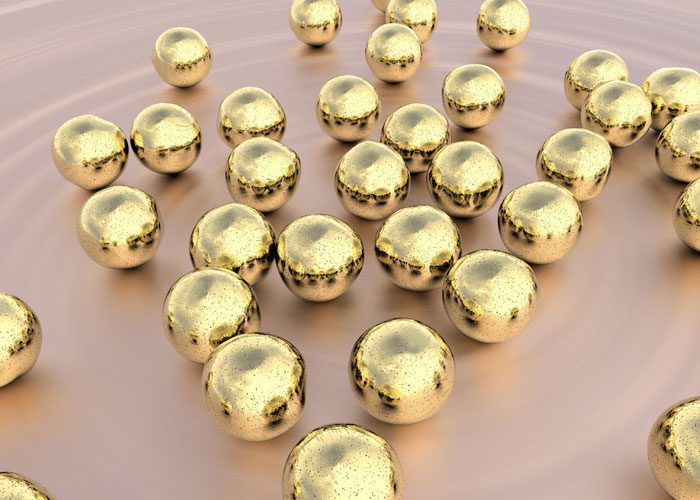Nano-sized gold particles, shaped to behave as clones in bio-medicine
Posted: 3 November 2017 | Dr Zara Kassam (Drug Target Review) | No comments yet
Gold nanoparticles have been shaped to improve their properties in biomedicine and photonics by using a special laser system…


Shaping nanometric gold particles – of the size of millionths of a millimetre – to improve their properties in biomedicine and photonics has been made possible by a special laser system at the Universidad Complutense de Madrid (UCM).
The research, in which the CIC biomaGUNE and the Universidad Politécnica de Madrid also participate, represents a record in optical quality in which billions of gold nanoparticles behave as a single one, but introduces a new way to manipulate and improve nanomaterials by employing lasers as chisels in the hands of a sculptor.
“By using ultrafast lasers, which are very intense but very short in duration, we have realised a world record in optical quality, where all the obtained shaped particles behave like nano-sized clones”, explains Andrés Guerrero Martínez, researcher of the Ramón y Cajal Program at the Faculty of Chemical Sciences of the UCM.
The study provides the physical and chemical clues required to understand and control such nanomaterials, considered to be “perfect” from an optical point of view.
“We have tried during the last fifteen years to obtain identical nanoparticles, so that they all present the same colour and their applications are more efficient. In this work, we have focused on the use of gold nanorods, in which minimal variations in their length or width result in significant changes in the colour of the light they absorb”, says Luis Liz Marzán, scientific director of CIC biomaGUNE and researcher at the Ikerbasque Program.
The applications of nanoparticles rely on their ability to absorb and reflect light of a specific colour in a surprisingly effective way. These so-called plasmonic effects result in optical properties that cannot be achieved with metals of larger dimensions, even at the millimetre scale.
These properties can be used for a large number of useful applications that, in many cases, were not possible until now. In medicine, not only the light reflected by these particles can be used to diagnose diseases, but their light absorption properties can also be exploited to induce the release of heat for, for example, the treatment of tumours in a localised way, thus minimising the usual side effects of current treatments.
“Plasmonic particles have also found applications in areas such as information technology, energy production, or environmental pollution control, among others”, said co-author Guillermo González Rubio.
Another novelty of this work is the application of ultrafast lasers to shape the geometry of the particles and refine their properties. In this case, Luis Bañares, a professor at the UCM and co-author of the article, works at the Ultrafast Laser Center (CLUR) at the UCM.
Furthermore, so as to understand the chemical and physical nature of the shaping process, standard characterisation techniques (spectroscopy and electron microscopy) have been employed, as well as new theoretical models and advanced computer simulation techniques.
According to Ovidio Rodríguez Peña, a researcher at the UPM, “the demonstration of this goal and the explanation of the processes that allow it to happen to represent a paradigm shift that may open new avenues for the development of nanomaterials with improved properties and applications”.
The research has been published in Science.
Related topics
Disease Research, Drug Delivery, Nanomedicine, Nanoparticles
Related organisations
Ramón y Cajal Program
Related people
Andrés Guerrero Martínez, Guillermo González Rubio, Luis Bañares








